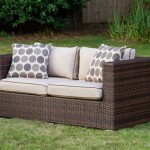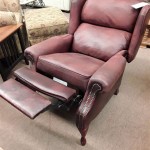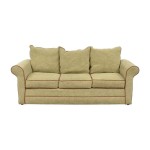Antique Sofa Tables: Essential Aspects
Antique sofa tables hold a special place in history, serving as decorative and functional pieces within countless homes. They seamlessly blend the charm of the past with contemporary aesthetics, offering an aura of elegance and timeless appeal. Understanding the essential aspects of antique sofa tables is paramount, as it enhances one's appreciation for these magnificent creations and aids in informed decision-making during acquisition or restoration.
This article delves into the essential elements that define antique sofa tables, exploring their historical significance, construction techniques, stylistic variations, and conservation practices. By unraveling these aspects, we gain a deeper comprehension of the craftsmanship, beauty, and value these tables embody.
Historical Significance
Antique sofa tables have a rich history dating back centuries. Their origins can be traced to the 17th century, when they emerged as decorative elements adorning the grand halls of European nobility. Initially, these tables were known as "console tables" due to their placement against a wall, often serving as display platforms for prized possessions. Over time, sofa tables evolved to become more elaborate and ornate, reflecting the prevailing artistic styles of different eras.
Construction Techniques
The construction of antique sofa tables showcases the meticulous craftsmanship and attention to detail that went into their making. Traditionally, these tables were handcrafted using solid, high-quality woods such as mahogany, walnut, and oak. Joinery techniques like dovetailing and mortise-and-tenon joints ensured exceptional strength and longevity. The use of decorative carvings, moldings, and veneers brought an aesthetic dimension to each piece, making them works of art in their own right.
Stylistic Variations
Antique sofa tables exhibit a wide range of stylistic variations, reflecting the changing tastes and artistic influences of different eras. The Renaissance period introduced ornately carved tables with elaborate scrollwork and acanthus leaf motifs. The Baroque period saw the emergence of more grandiose tables with serpentine legs and gilt embellishments. The Rococo style brought forth graceful tables with asymmetrical curves and floral carvings. Georgian and Victorian eras introduced tables with clean lines, sharp angles, and refined details.
Conservation Practices
Preserving the beauty and integrity of antique sofa tables requires proper conservation practices. Regular cleaning with a soft, dry cloth helps remove dust and prevent scratches. Exposure to extreme temperatures or humidity should be avoided, as it can cause damage to the wood and finishes. If necessary, professional restoration by an experienced conservator can address any repairs or touch-ups required to maintain the table's original character and value.
In conclusion, antique sofa tables embody an enchanting blend of history, craftsmanship, and artistry. Understanding their historical significance, construction techniques, stylistic variations, and conservation practices enhances our appreciation for these timeless pieces. Whether adorning a grand hall, a cozy living room, or an antique collector's sanctuary, antique sofa tables continue to captivate with their elegance and enduring charm.

174 Antique Sofa Tables For Ingantiques Co

Antique Mahogany Sofa Table Regency Small Drop Flap Pembroke

Antique English Rosewood Sofa Table

Antique Primitive Table Console Desk

Antique Mahogany Sofa Table Kernow Furniture

Buy Classic Console Table 0121 In Collection Designer Luxury And Vintage Tables Wooden Furniture From Curvesandcarvings Com

Georgian Styled Mahogany Sofa Table Antique Furniture

Ragenardus Sofa Table Antique White Acme Furniture Cart

Antique Chippendale Sofa Table Console Set Designs

Antique Regency Mahogany Sofa Table Pembroke








